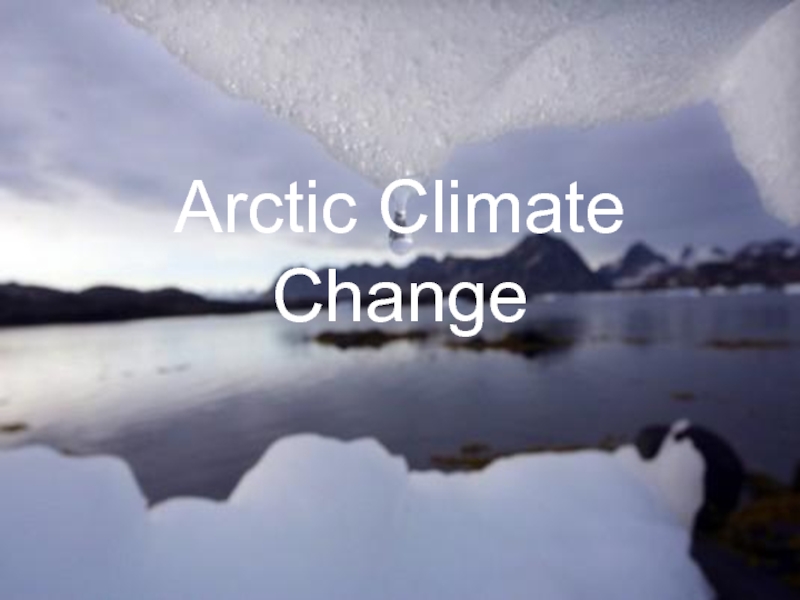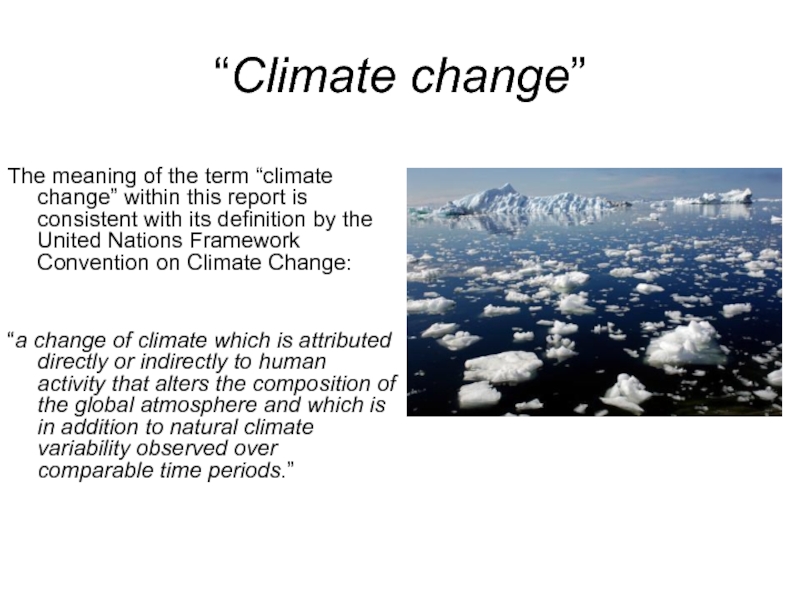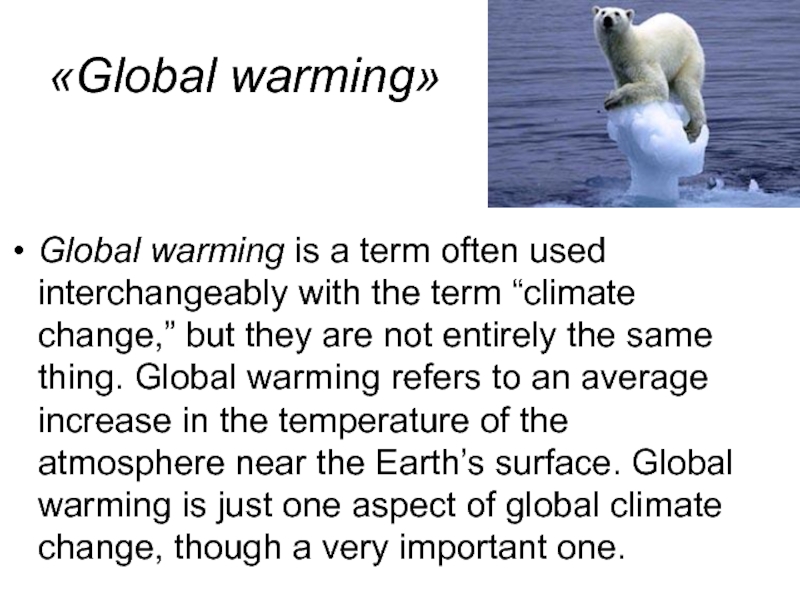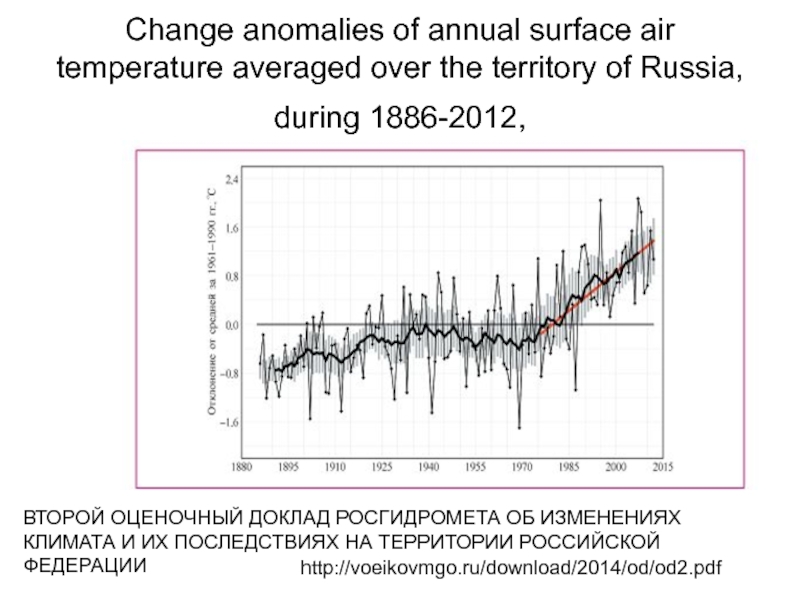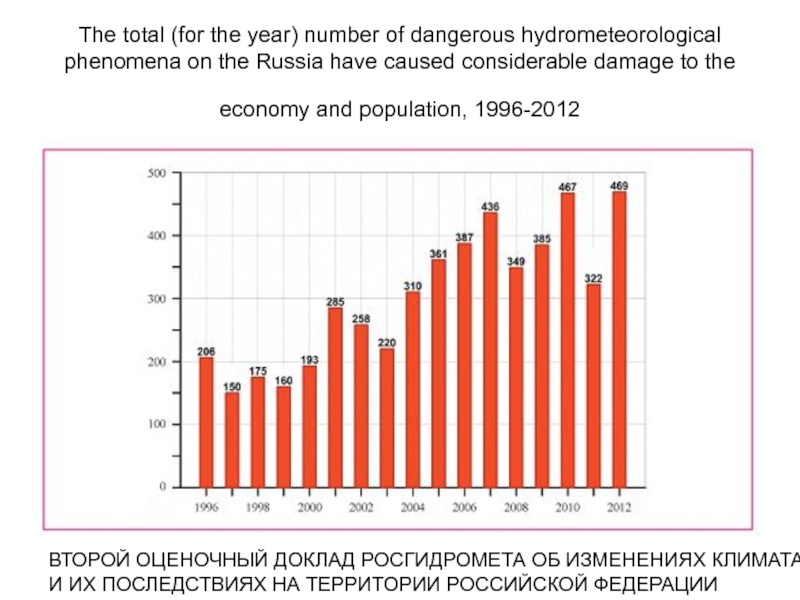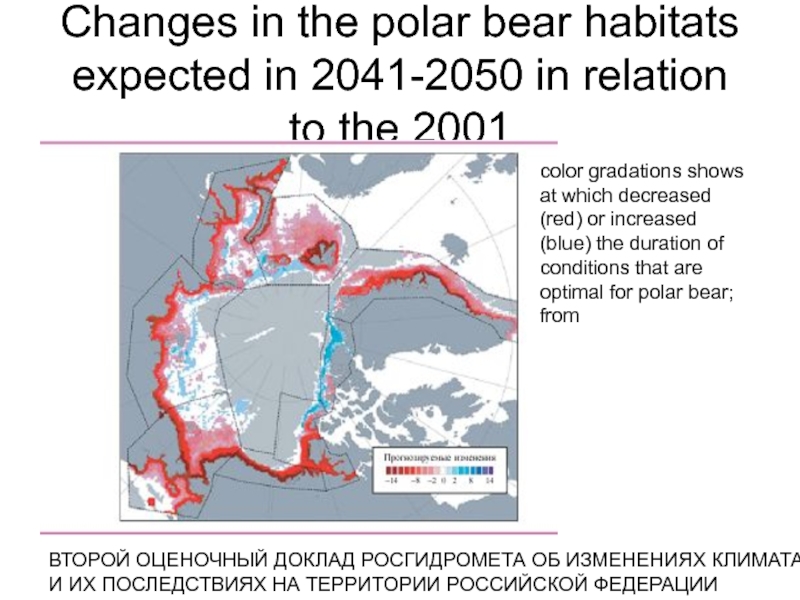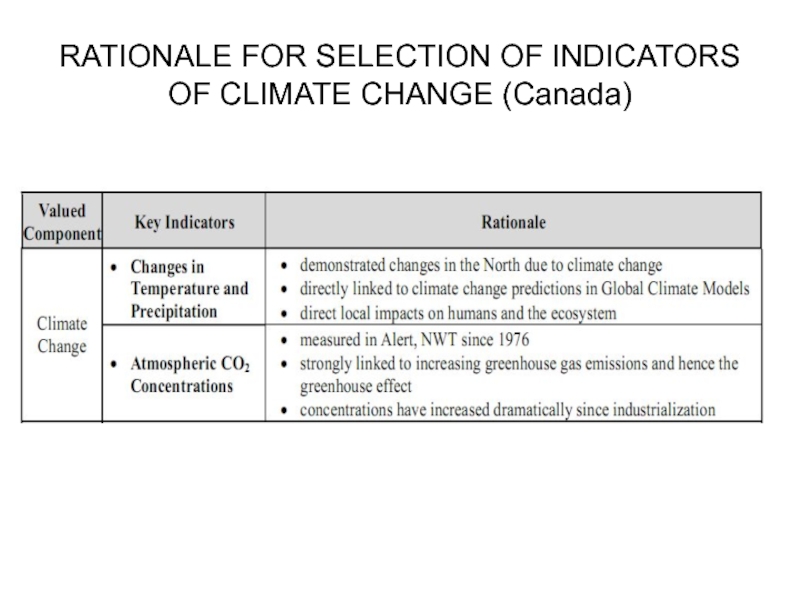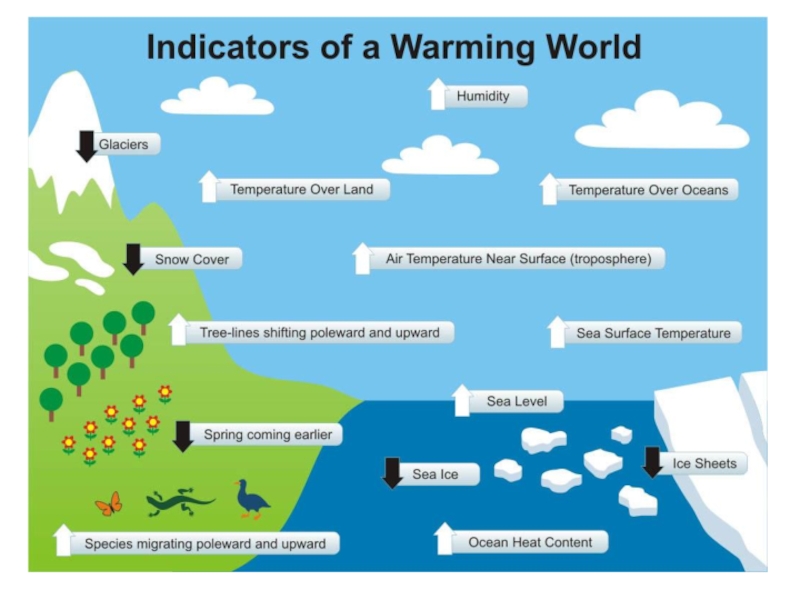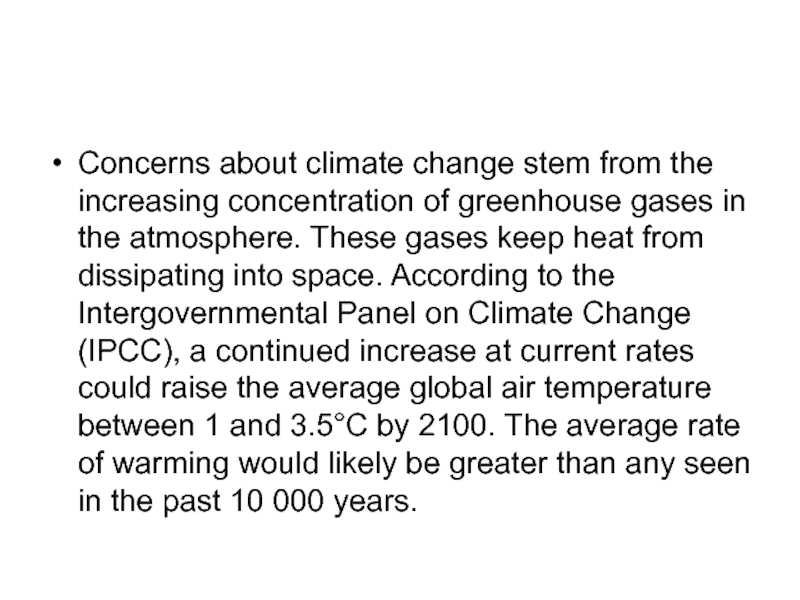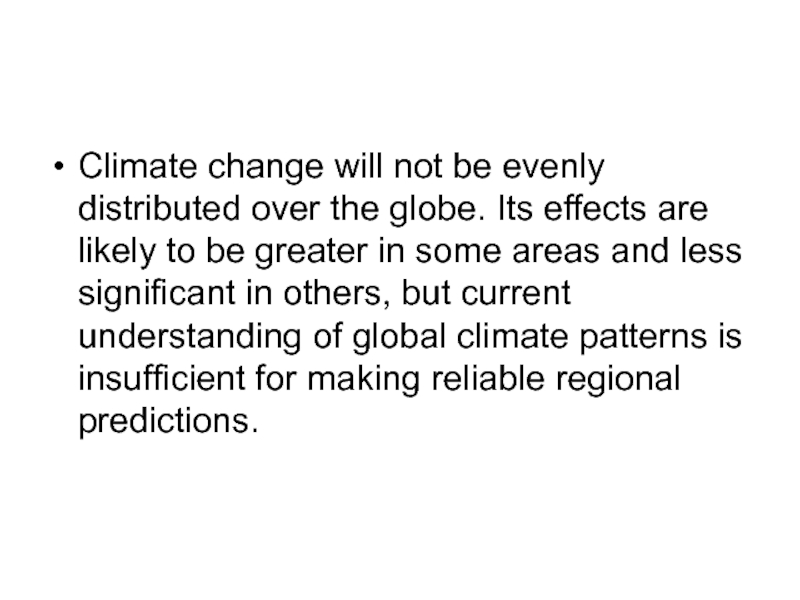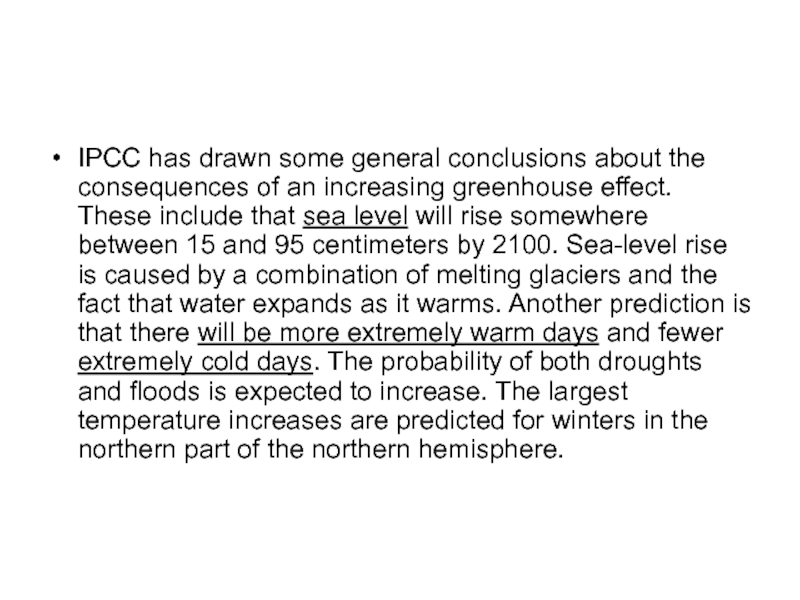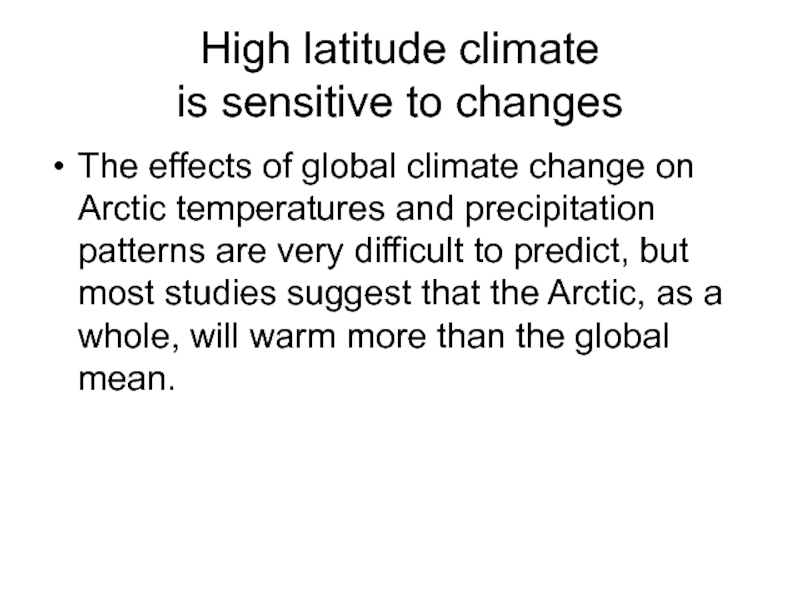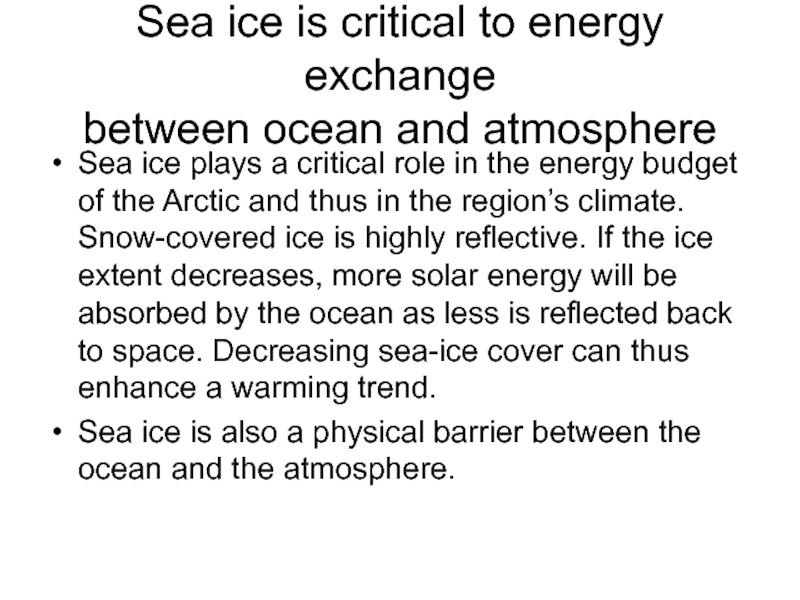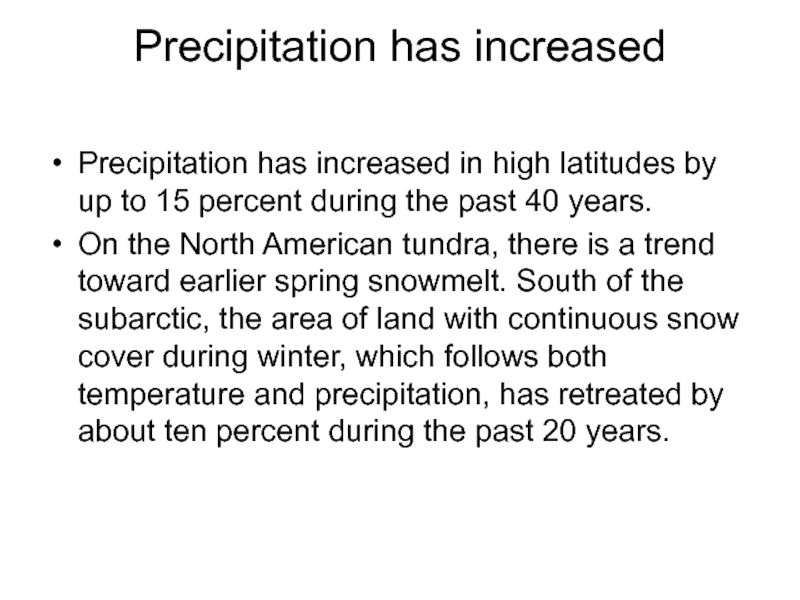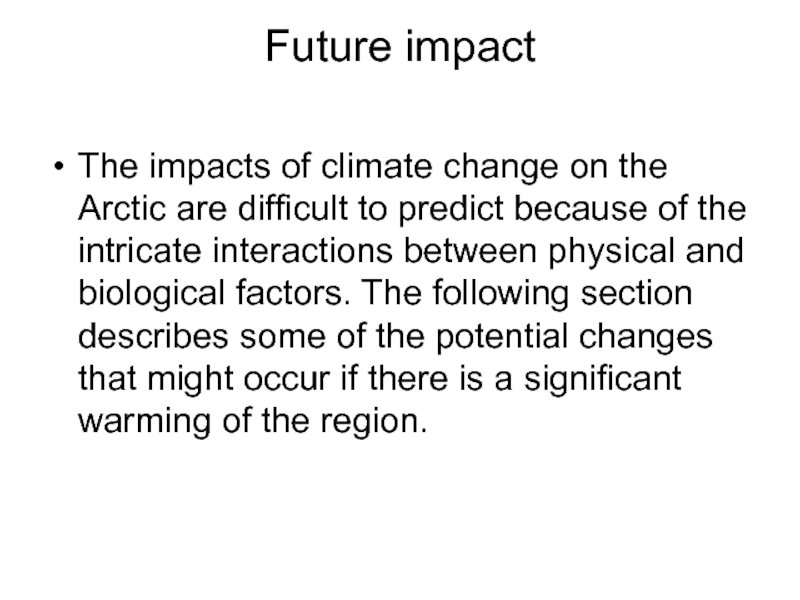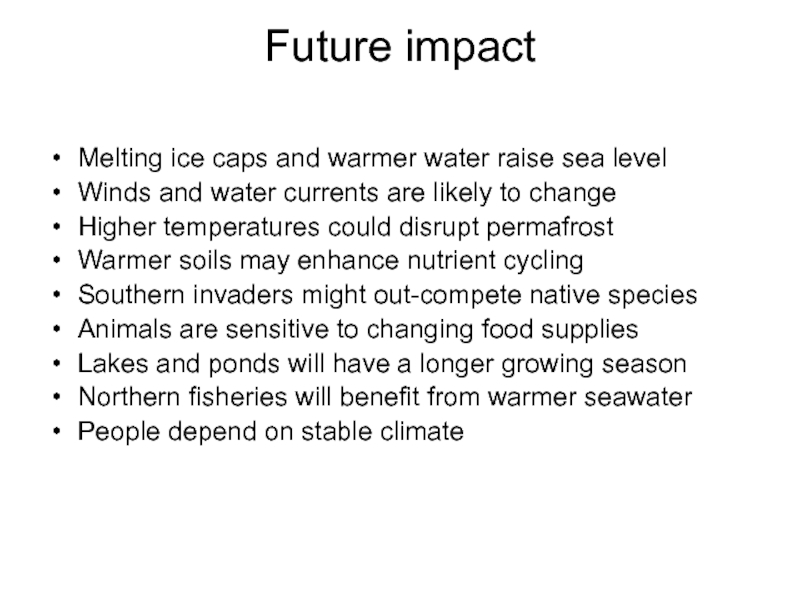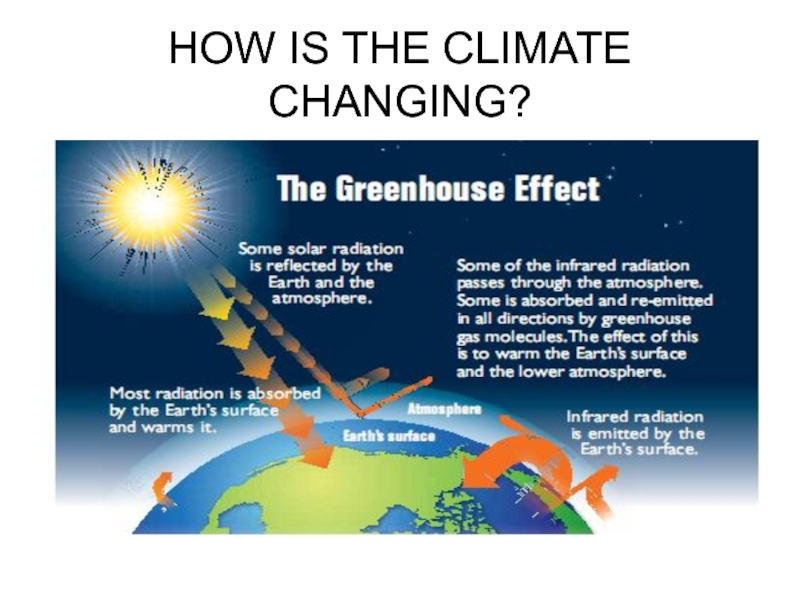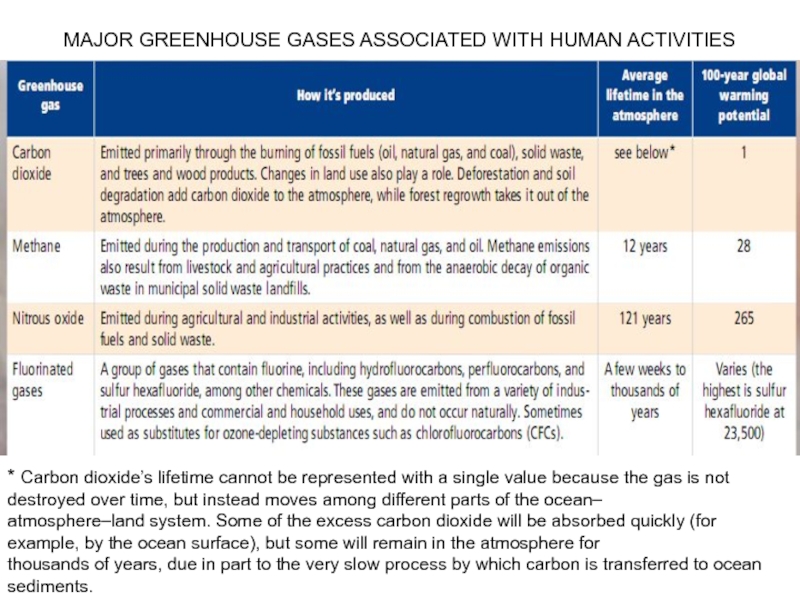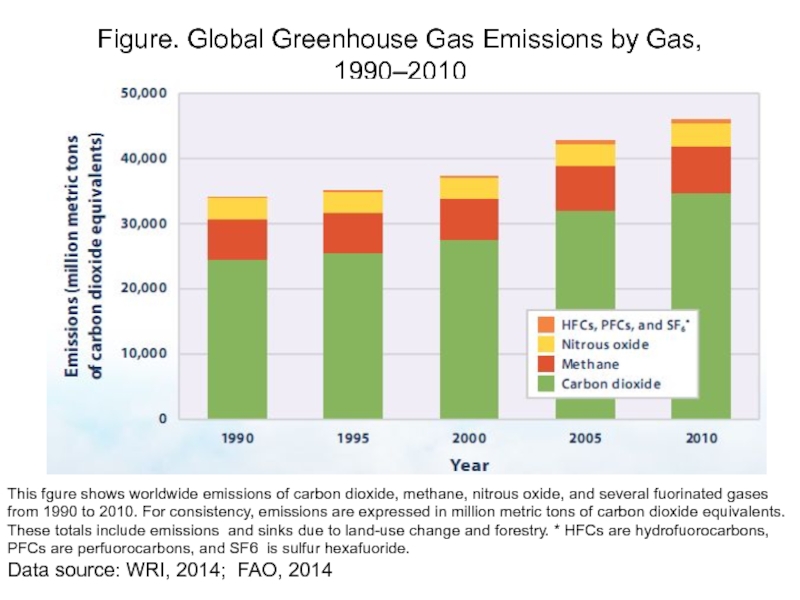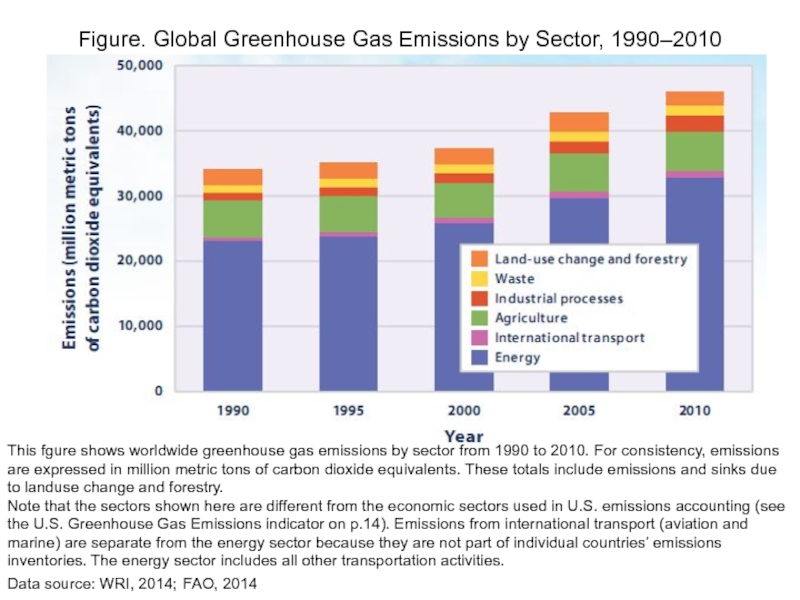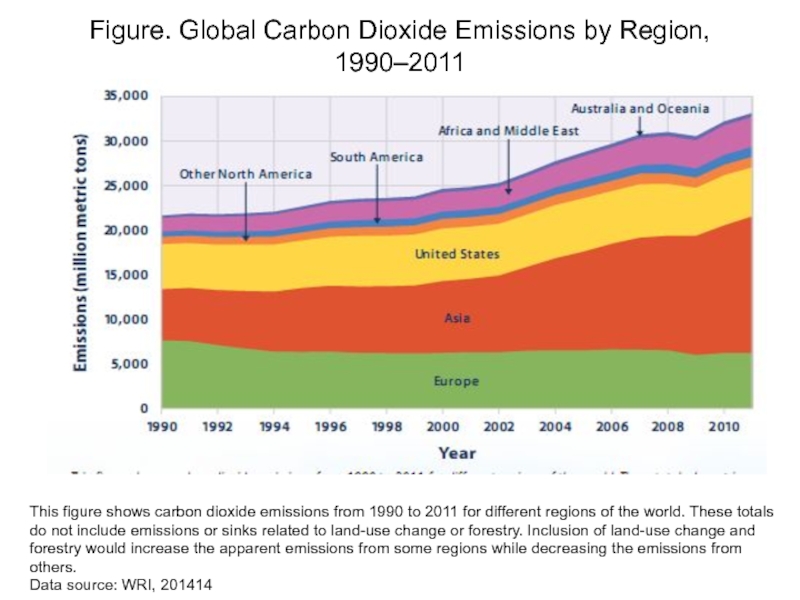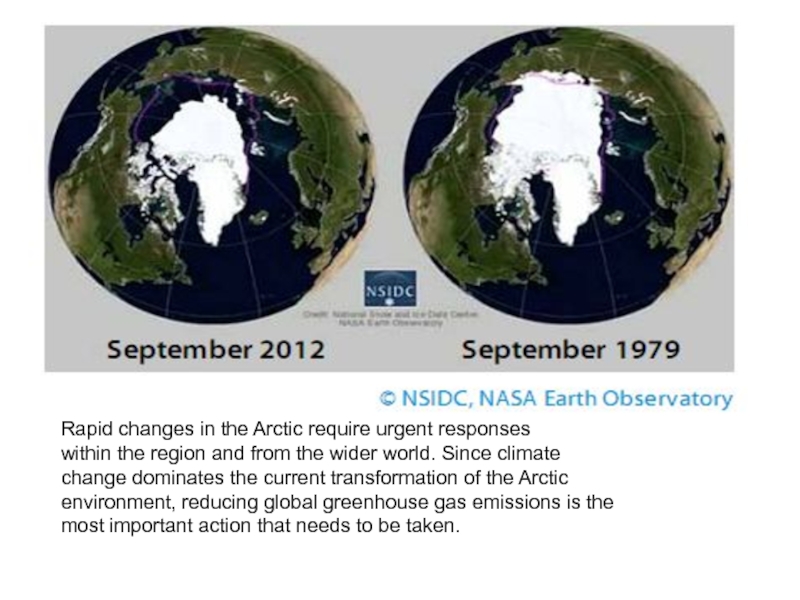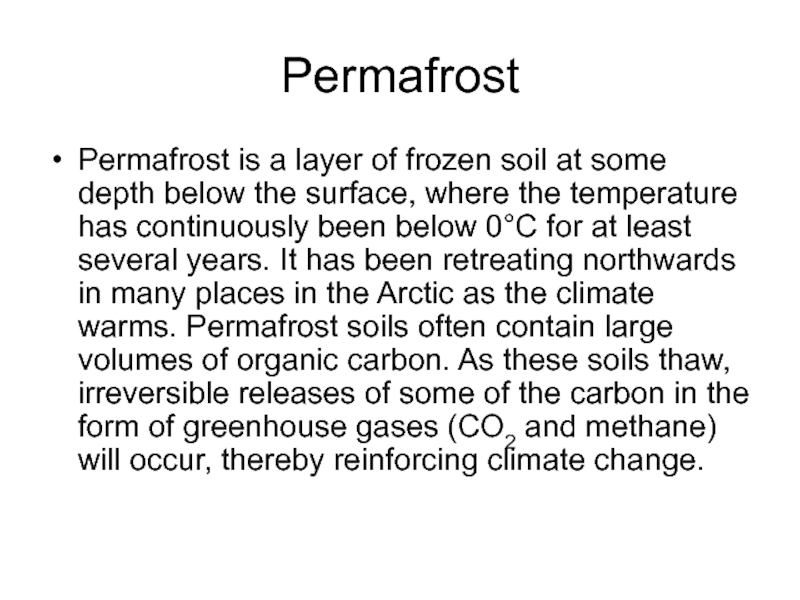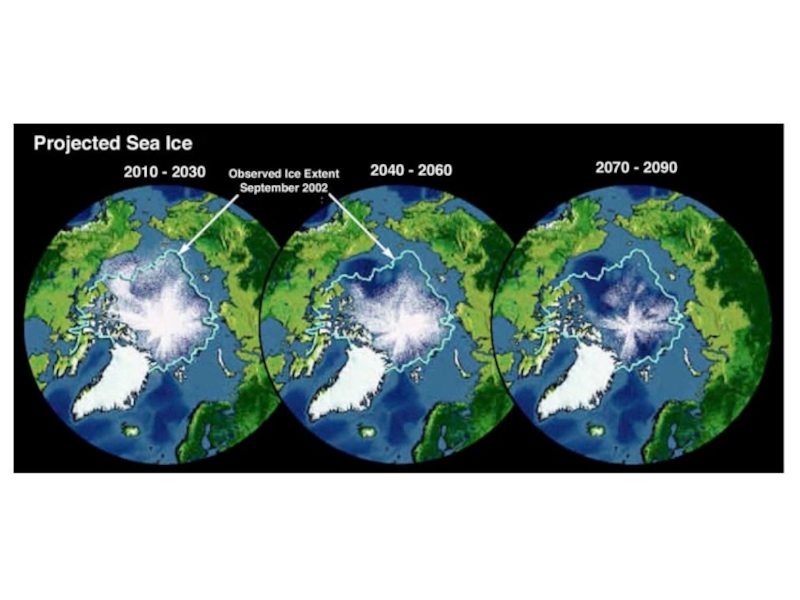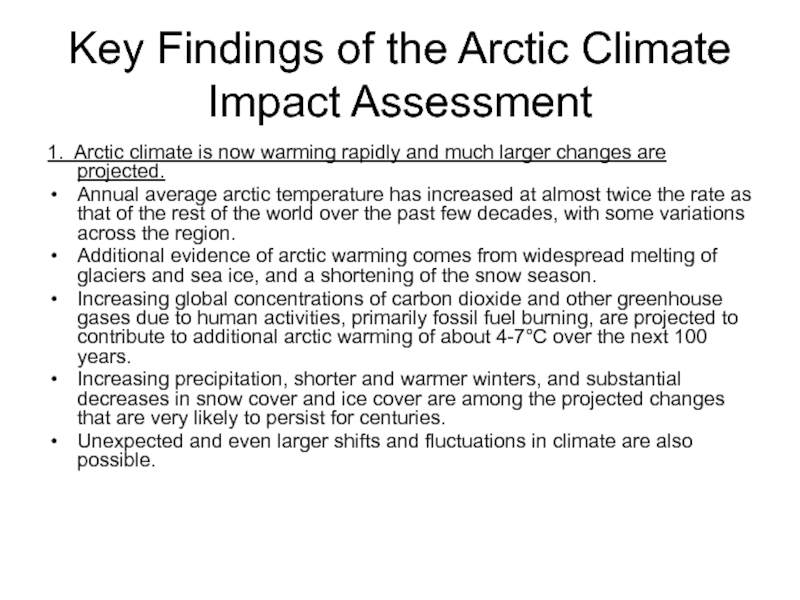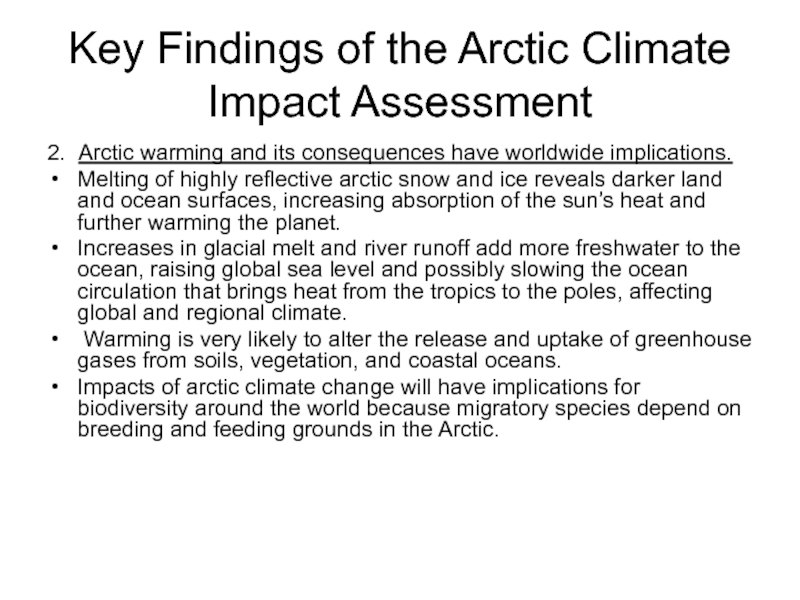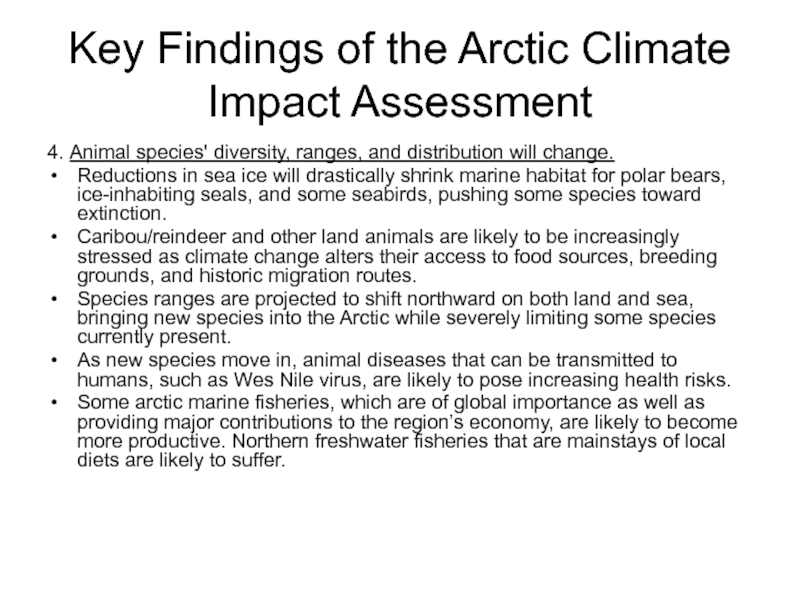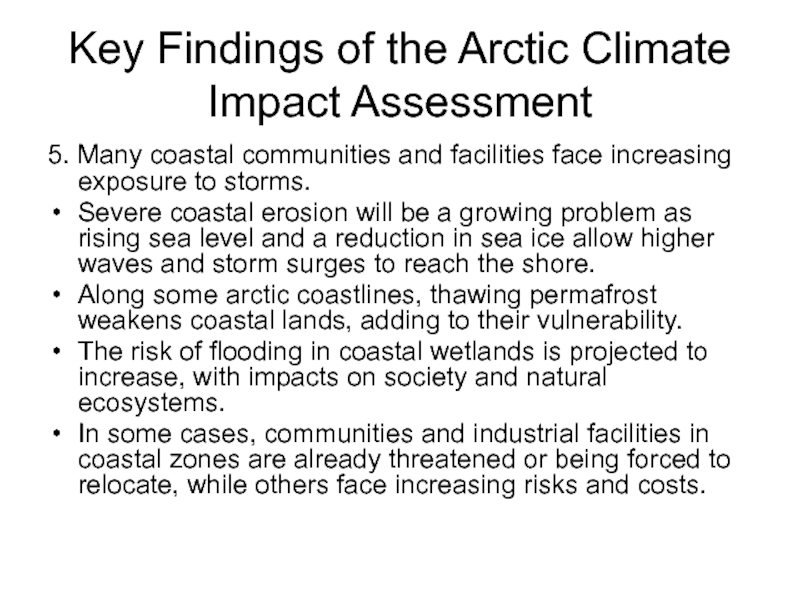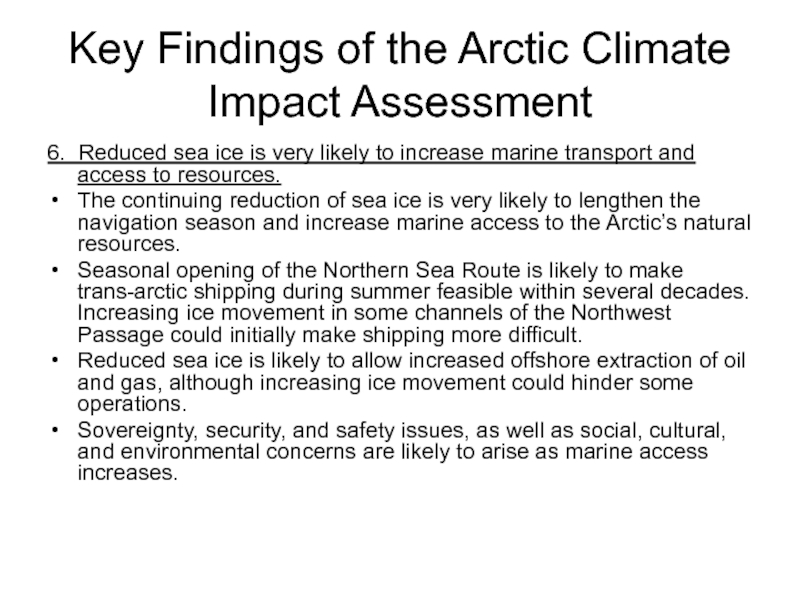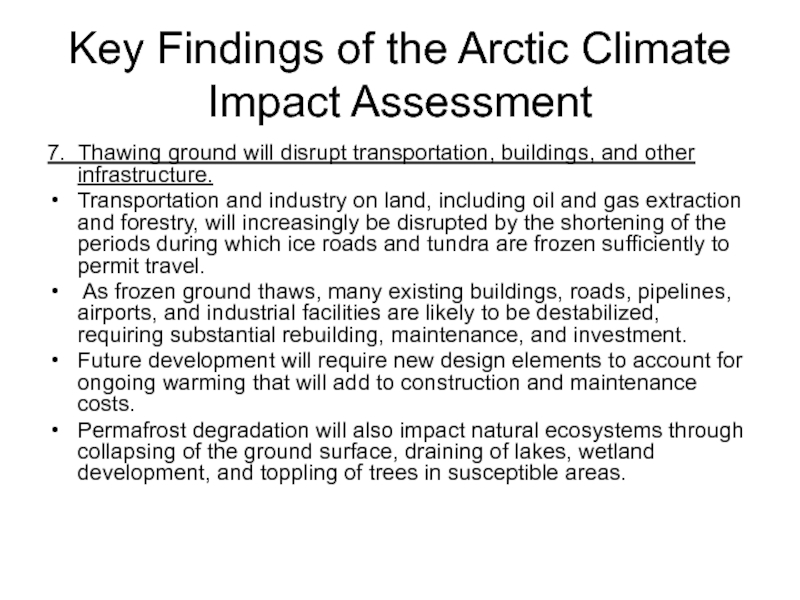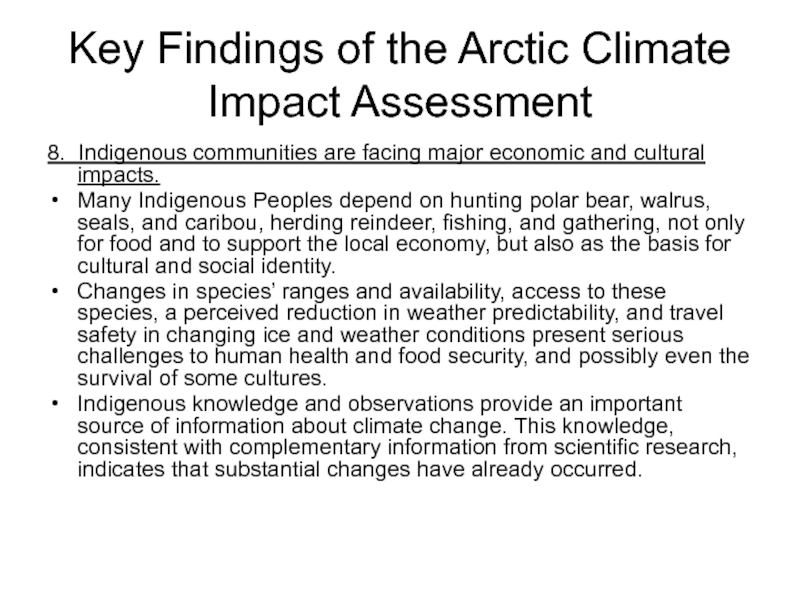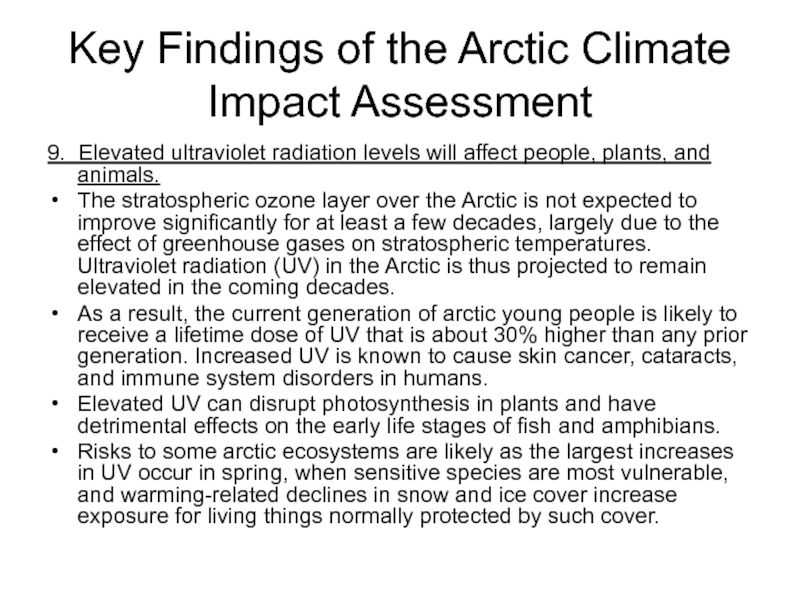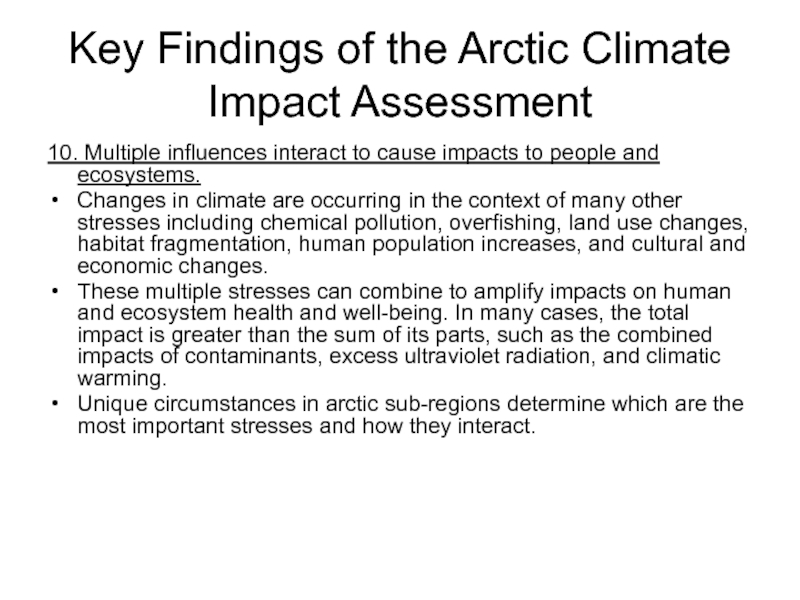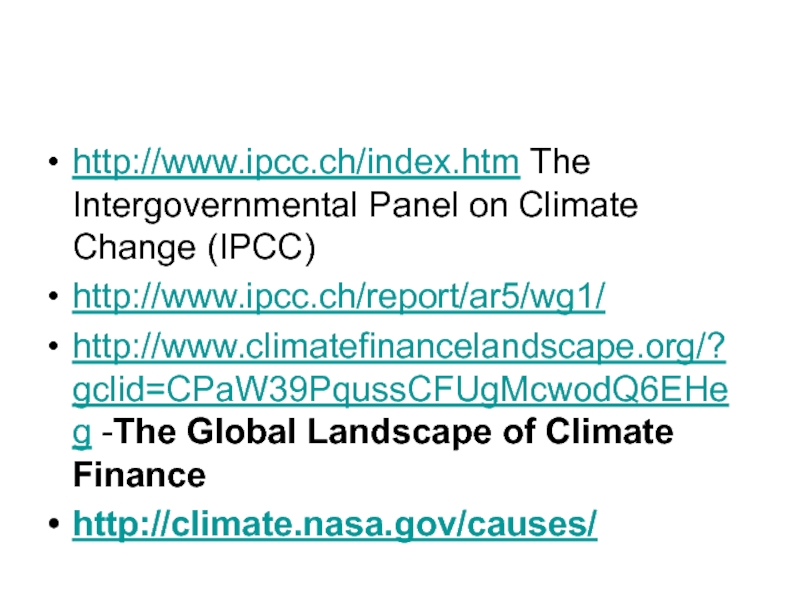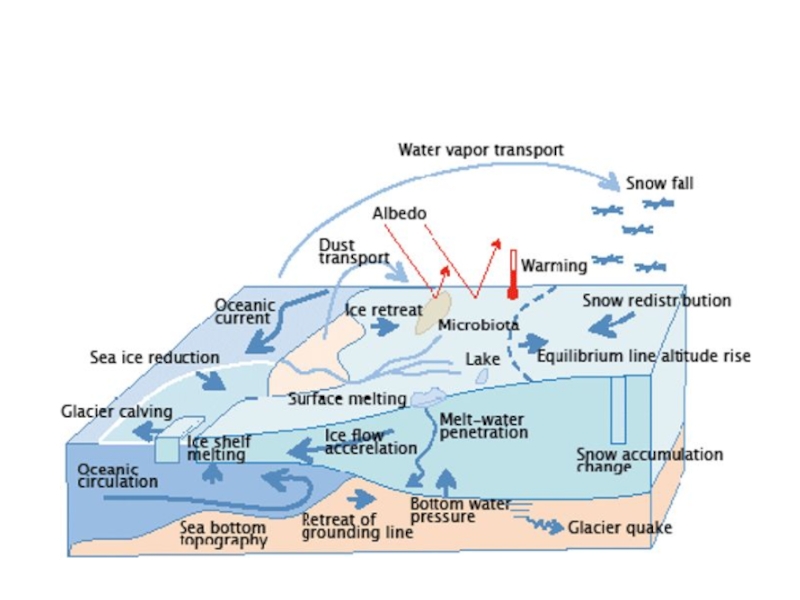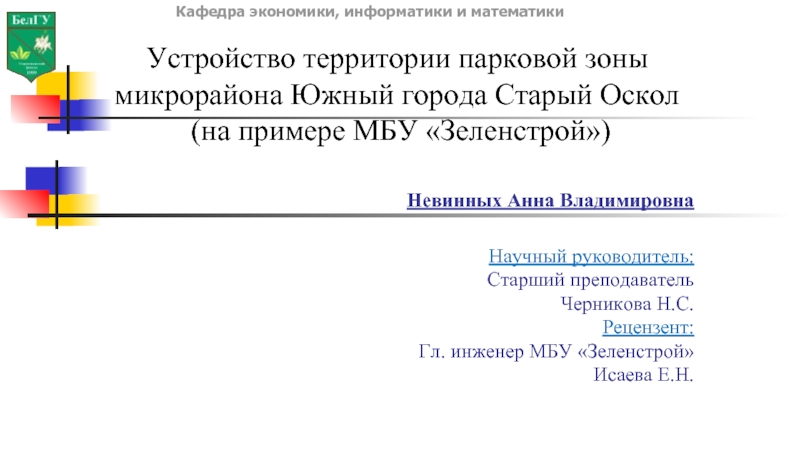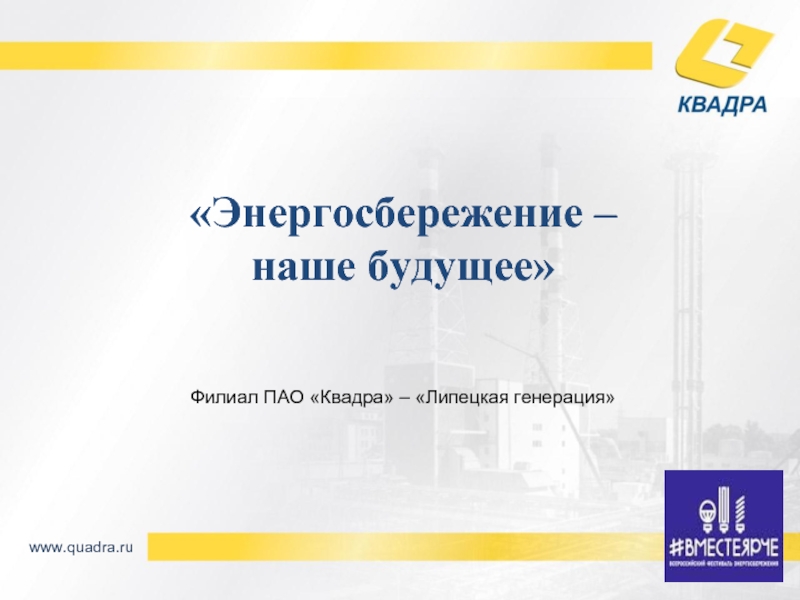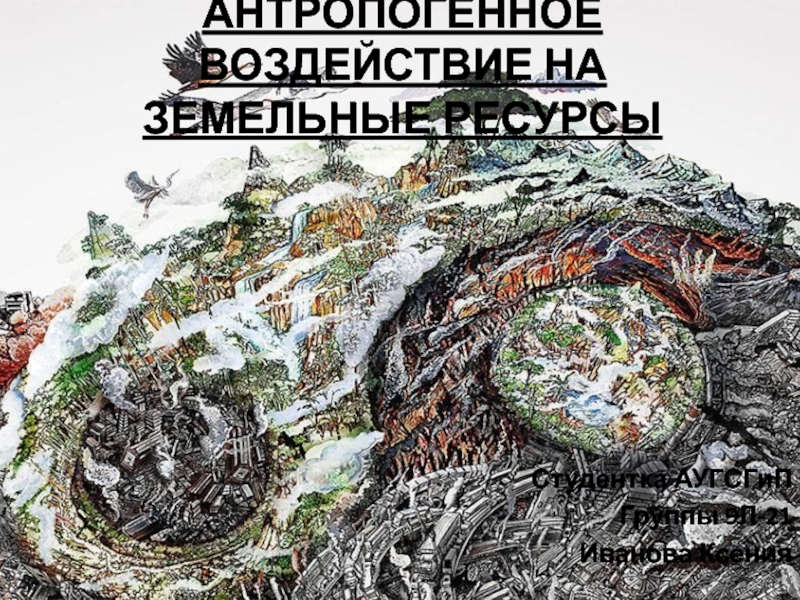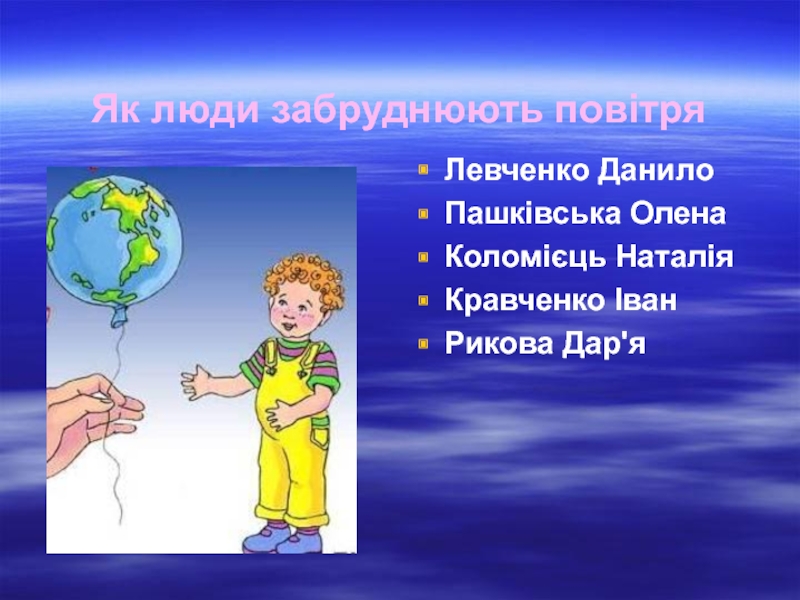- Главная
- Разное
- Дизайн
- Бизнес и предпринимательство
- Аналитика
- Образование
- Развлечения
- Красота и здоровье
- Финансы
- Государство
- Путешествия
- Спорт
- Недвижимость
- Армия
- Графика
- Культурология
- Еда и кулинария
- Лингвистика
- Английский язык
- Астрономия
- Алгебра
- Биология
- География
- Детские презентации
- Информатика
- История
- Литература
- Маркетинг
- Математика
- Медицина
- Менеджмент
- Музыка
- МХК
- Немецкий язык
- ОБЖ
- Обществознание
- Окружающий мир
- Педагогика
- Русский язык
- Технология
- Физика
- Философия
- Химия
- Шаблоны, картинки для презентаций
- Экология
- Экономика
- Юриспруденция
Arctic Climate Change презентация
Содержание
- 1. Arctic Climate Change
- 2. “Сlimate change” The meaning of the term
- 3. «Global warming» Global warming is a term
- 4. Change anomalies of annual surface air temperature
- 5. The total (for the year) number of
- 6. The average annual temperature of rocks in
- 7. Changes in the polar bear habitats expected
- 8. Arctic climate change The Arctic has some
- 9. RATIONALE FOR SELECTION OF INDICATORS OF CLIMATE CHANGE (Canada)
- 11. Concerns about climate change stem from
- 12. Climate change will not be evenly
- 13. IPCC has drawn some general conclusions
- 14. High latitude climate is sensitive to changes
- 15. Sea ice is critical to energy exchange
- 16. Precipitation has increased Precipitation has increased
- 17. Future impact The impacts of climate
- 18. Future impact Melting ice caps and
- 19. HOW IS THE CLIMATE CHANGING?
- 20. MAJOR GREENHOUSE GASES ASSOCIATED WITH HUMAN ACTIVITIES
- 21. Figure. Global Greenhouse Gas Emissions by Gas,
- 22. Figure. Global Greenhouse Gas Emissions by Sector,
- 23. Figure. Global Carbon Dioxide Emissions by Region,
- 24. Rapid changes in the Arctic require urgent
- 25. Permafrost Permafrost is a layer of frozen
- 27. Key Findings of the Arctic Climate Impact
- 28. Key Findings of the Arctic Climate Impact
- 29. Key Findings of the Arctic Climate Impact
- 30. Key Findings of the Arctic Climate Impact
- 31. Key Findings of the Arctic Climate Impact
- 32. Key Findings of the Arctic Climate Impact
- 33. Key Findings of the Arctic Climate Impact
- 34. Key Findings of the Arctic Climate Impact
- 35. Key Findings of the Arctic Climate Impact
- 36. Key Findings of the Arctic Climate Impact
- 37. http://www.ipcc.ch/index.htm The Intergovernmental Panel on Climate
Слайд 2“Сlimate change”
The meaning of the term “climate change” within this report
“a change of climate which is attributed directly or indirectly to human activity that alters the composition of the global atmosphere and which is in addition to natural climate variability observed over comparable time periods.”
Слайд 3«Global warming»
Global warming is a term often used interchangeably with the
Слайд 4Change anomalies of annual surface air temperature averaged over the territory
http://voeikovmgo.ru/download/2014/od/od2.pdf
ВТОРОЙ ОЦЕНОЧНЫЙ ДОКЛАД РОСГИДРОМЕТА ОБ ИЗМЕНЕНИЯХ КЛИМАТА И ИХ ПОСЛЕДСТВИЯХ НА ТЕРРИТОРИИ РОССИЙСКОЙ ФЕДЕРАЦИИ
Слайд 5The total (for the year) number of dangerous hydrometeorological phenomena on
ВТОРОЙ ОЦЕНОЧНЫЙ ДОКЛАД РОСГИДРОМЕТА ОБ ИЗМЕНЕНИЯХ КЛИМАТА И ИХ ПОСЛЕДСТВИЯХ НА ТЕРРИТОРИИ РОССИЙСКОЙ ФЕДЕРАЦИИ
Слайд 6The average annual temperature of rocks in the lower part of
Thawed from the surface of the permafrost is shown in pink.
ВТОРОЙ ОЦЕНОЧНЫЙ ДОКЛАД РОСГИДРОМЕТА ОБ ИЗМЕНЕНИЯХ КЛИМАТА И ИХ ПОСЛЕДСТВИЯХ НА ТЕРРИТОРИИ РОССИЙСКОЙ ФЕДЕРАЦИИ
Слайд 7Changes in the polar bear habitats expected in 2041-2050 in relation
color gradations shows at which decreased (red) or increased (blue) the duration of conditions that are optimal for polar bear; from
ВТОРОЙ ОЦЕНОЧНЫЙ ДОКЛАД РОСГИДРОМЕТА ОБ ИЗМЕНЕНИЯХ КЛИМАТА И ИХ ПОСЛЕДСТВИЯХ НА ТЕРРИТОРИИ РОССИЙСКОЙ ФЕДЕРАЦИИ
Слайд 8Arctic climate change
The Arctic has some special features that make it
Слайд 11
Concerns about climate change stem from the increasing concentration of greenhouse
Слайд 12
Climate change will not be evenly distributed over the globe. Its
Слайд 13
IPCC has drawn some general conclusions about the consequences of an
Слайд 14High latitude climate
is sensitive to changes
The effects of global climate change
Слайд 15Sea ice is critical to energy exchange
between ocean and atmosphere
Sea ice
Sea ice is also a physical barrier between the ocean and the atmosphere.
Слайд 16Precipitation has increased
Precipitation has increased in high latitudes by up to
On the North American tundra, there is a trend toward earlier spring snowmelt. South of the subarctic, the area of land with continuous snow cover during winter, which follows both temperature and precipitation, has retreated by about ten percent during the past 20 years.
Слайд 17Future impact
The impacts of climate change on the Arctic are difficult
Слайд 18Future impact
Melting ice caps and warmer water raise sea level
Winds and
Higher temperatures could disrupt permafrost
Warmer soils may enhance nutrient cycling
Southern invaders might out-compete native species
Animals are sensitive to changing food supplies
Lakes and ponds will have a longer growing season
Northern fisheries will benefit from warmer seawater
People depend on stable climate
Слайд 20MAJOR GREENHOUSE GASES ASSOCIATED WITH HUMAN ACTIVITIES
* Carbon dioxide’s lifetime cannot
atmosphere–land system. Some of the excess carbon dioxide will be absorbed quickly (for example, by the ocean surface), but some will remain in the atmosphere for
thousands of years, due in part to the very slow process by which carbon is transferred to ocean sediments.
Слайд 21Figure. Global Greenhouse Gas Emissions by Gas, 1990–2010
This fgure shows worldwide
Data source: WRI, 2014; FAO, 2014
Слайд 22Figure. Global Greenhouse Gas Emissions by Sector, 1990–2010
This fgure shows worldwide
Note that the sectors shown here are different from the economic sectors used in U.S. emissions accounting (see the U.S. Greenhouse Gas Emissions indicator on p.14). Emissions from international transport (aviation and marine) are separate from the energy sector because they are not part of individual countries’ emissions inventories. The energy sector includes all other transportation activities.
Data source: WRI, 2014; FAO, 2014
Слайд 23Figure. Global Carbon Dioxide Emissions by Region, 1990–2011
This figure shows carbon
Data source: WRI, 201414
Слайд 24Rapid changes in the Arctic require urgent responses
within the region
change dominates the current transformation of the Arctic
environment, reducing global greenhouse gas emissions is the
most important action that needs to be taken.
Слайд 25Permafrost
Permafrost is a layer of frozen soil at some depth below
Слайд 27Key Findings of the Arctic Climate Impact Assessment
1. Arctic climate is
Annual average arctic temperature has increased at almost twice the rate as that of the rest of the world over the past few decades, with some variations across the region.
Additional evidence of arctic warming comes from widespread melting of glaciers and sea ice, and a shortening of the snow season.
Increasing global concentrations of carbon dioxide and other greenhouse gases due to human activities, primarily fossil fuel burning, are projected to contribute to additional arctic warming of about 4-7°C over the next 100 years.
Increasing precipitation, shorter and warmer winters, and substantial decreases in snow cover and ice cover are among the projected changes that are very likely to persist for centuries.
Unexpected and even larger shifts and fluctuations in climate are also possible.
Слайд 28Key Findings of the Arctic Climate Impact Assessment
2. Arctic warming and
Melting of highly reflective arctic snow and ice reveals darker land and ocean surfaces, increasing absorption of the sun’s heat and further warming the planet.
Increases in glacial melt and river runoff add more freshwater to the ocean, raising global sea level and possibly slowing the ocean circulation that brings heat from the tropics to the poles, affecting global and regional climate.
Warming is very likely to alter the release and uptake of greenhouse gases from soils, vegetation, and coastal oceans.
Impacts of arctic climate change will have implications for biodiversity around the world because migratory species depend on breeding and feeding grounds in the Arctic.
Слайд 29Key Findings of the Arctic Climate Impact Assessment
3. Arctic vegetation zones
Treeline is expected to move northward and to higher elevations, with forests replacing a significant fraction of existing tundra, and tundra vegetation moving into polar deserts.
More-productive vegetation is likely to increase carbon uptake, although reduced reflectivity of the land surface is likely to outweigh this, causing further warming.
Disturbances such as insect outbreaks and forest fires are very likely to increase in frequency, severity, and duration, facilitating invasions by non-native species.
Where suitable soils are present, agriculture will have the potential to expand northward due to a longer and warmer growing season.
Слайд 30Key Findings of the Arctic Climate Impact Assessment
4. Animal species' diversity,
Reductions in sea ice will drastically shrink marine habitat for polar bears, ice-inhabiting seals, and some seabirds, pushing some species toward extinction.
Caribou/reindeer and other land animals are likely to be increasingly stressed as climate change alters their access to food sources, breeding grounds, and historic migration routes.
Species ranges are projected to shift northward on both land and sea, bringing new species into the Arctic while severely limiting some species currently present.
As new species move in, animal diseases that can be transmitted to humans, such as Wes Nile virus, are likely to pose increasing health risks.
Some arctic marine fisheries, which are of global importance as well as providing major contributions to the region’s economy, are likely to become more productive. Northern freshwater fisheries that are mainstays of local diets are likely to suffer.
Слайд 31Key Findings of the Arctic Climate Impact Assessment
5. Many coastal communities
Severe coastal erosion will be a growing problem as rising sea level and a reduction in sea ice allow higher waves and storm surges to reach the shore.
Along some arctic coastlines, thawing permafrost weakens coastal lands, adding to their vulnerability.
The risk of flooding in coastal wetlands is projected to increase, with impacts on society and natural ecosystems.
In some cases, communities and industrial facilities in coastal zones are already threatened or being forced to relocate, while others face increasing risks and costs.
Слайд 32Key Findings of the Arctic Climate Impact Assessment
6. Reduced sea ice
The continuing reduction of sea ice is very likely to lengthen the navigation season and increase marine access to the Arctic’s natural resources.
Seasonal opening of the Northern Sea Route is likely to make trans-arctic shipping during summer feasible within several decades. Increasing ice movement in some channels of the Northwest Passage could initially make shipping more difficult.
Reduced sea ice is likely to allow increased offshore extraction of oil and gas, although increasing ice movement could hinder some operations.
Sovereignty, security, and safety issues, as well as social, cultural, and environmental concerns are likely to arise as marine access increases.
Слайд 33Key Findings of the Arctic Climate Impact Assessment
7. Thawing ground will
Transportation and industry on land, including oil and gas extraction and forestry, will increasingly be disrupted by the shortening of the periods during which ice roads and tundra are frozen sufficiently to permit travel.
As frozen ground thaws, many existing buildings, roads, pipelines, airports, and industrial facilities are likely to be destabilized, requiring substantial rebuilding, maintenance, and investment.
Future development will require new design elements to account for ongoing warming that will add to construction and maintenance costs.
Permafrost degradation will also impact natural ecosystems through collapsing of the ground surface, draining of lakes, wetland development, and toppling of trees in susceptible areas.
Слайд 34Key Findings of the Arctic Climate Impact Assessment
8. Indigenous communities are
Many Indigenous Peoples depend on hunting polar bear, walrus, seals, and caribou, herding reindeer, fishing, and gathering, not only for food and to support the local economy, but also as the basis for cultural and social identity.
Changes in species’ ranges and availability, access to these species, a perceived reduction in weather predictability, and travel safety in changing ice and weather conditions present serious challenges to human health and food security, and possibly even the survival of some cultures.
Indigenous knowledge and observations provide an important source of information about climate change. This knowledge, consistent with complementary information from scientific research, indicates that substantial changes have already occurred.
Слайд 35Key Findings of the Arctic Climate Impact Assessment
9. Elevated ultraviolet radiation
The stratospheric ozone layer over the Arctic is not expected to improve significantly for at least a few decades, largely due to the effect of greenhouse gases on stratospheric temperatures. Ultraviolet radiation (UV) in the Arctic is thus projected to remain elevated in the coming decades.
As a result, the current generation of arctic young people is likely to receive a lifetime dose of UV that is about 30% higher than any prior generation. Increased UV is known to cause skin cancer, cataracts, and immune system disorders in humans.
Elevated UV can disrupt photosynthesis in plants and have detrimental effects on the early life stages of fish and amphibians.
Risks to some arctic ecosystems are likely as the largest increases in UV occur in spring, when sensitive species are most vulnerable, and warming-related declines in snow and ice cover increase exposure for living things normally protected by such cover.
Слайд 36Key Findings of the Arctic Climate Impact Assessment
10. Multiple influences interact
Changes in climate are occurring in the context of many other stresses including chemical pollution, overfishing, land use changes, habitat fragmentation, human population increases, and cultural and economic changes.
These multiple stresses can combine to amplify impacts on human and ecosystem health and well-being. In many cases, the total impact is greater than the sum of its parts, such as the combined impacts of contaminants, excess ultraviolet radiation, and climatic warming.
Unique circumstances in arctic sub-regions determine which are the most important stresses and how they interact.
Слайд 37
http://www.ipcc.ch/index.htm The Intergovernmental Panel on Climate Change (IPCC)
http://www.ipcc.ch/report/ar5/wg1/
http://www.climatefinancelandscape.org/?gclid=CPaW39PqussCFUgMcwodQ6EHeg -The Global
http://climate.nasa.gov/causes/
